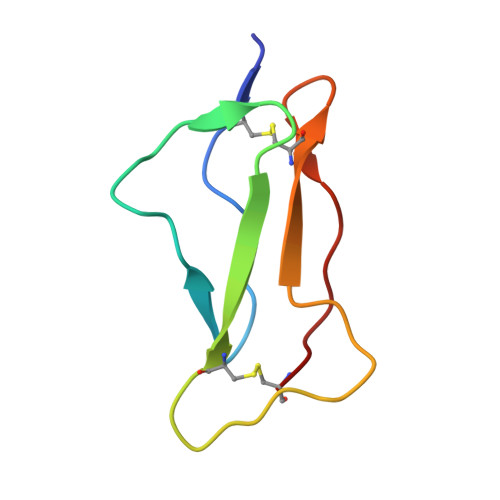Interaction of decay-accelerating factor with coxsackievirus b3.
Hafenstein, S., Bowman, V.D., Chipman, P.R., Kelly, C.M., Lin, F., Medof, M.E., Rossmann, M.G.(2007) J Virol 81: 12927-12935
- PubMed: 17804498
- DOI: https://doi.org/10.1128/JVI.00931-07
- Primary Citation of Related Structures:
2QZD, 2QZF, 2QZH - PubMed Abstract:
Many entero-, parecho-, and rhinoviruses use immunoglobulin (Ig)-like receptors that bind into the viral canyon and are required to initiate viral uncoating during infection. However, some of these viruses use an alternative or additional receptor that binds outside the canyon. Both the coxsackievirus-adenovirus receptor (CAR), an Ig-like molecule that binds into the viral canyon, and decay-accelerating factor (DAF) have been identified as cellular receptors for coxsackievirus B3 (CVB3). A cryoelectron microscopy reconstruction of a variant of CVB3 complexed with DAF shows full occupancy of the DAF receptor in each of 60 binding sites. The DAF molecule bridges the canyon, blocking the CAR binding site and causing the two receptors to compete with one another. The binding site of DAF on CVB3 differs from the binding site of DAF on the surface of echoviruses, suggesting independent evolutionary processes.
- Department of Biological Sciences, Purdue University, 915 W. State Street, West Lafayette, IN 47907-2054, USA.
Organizational Affiliation:
















